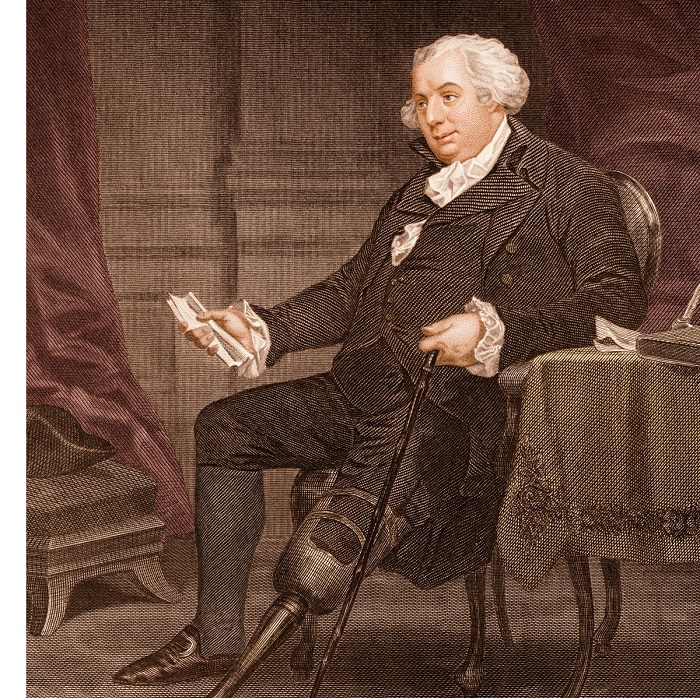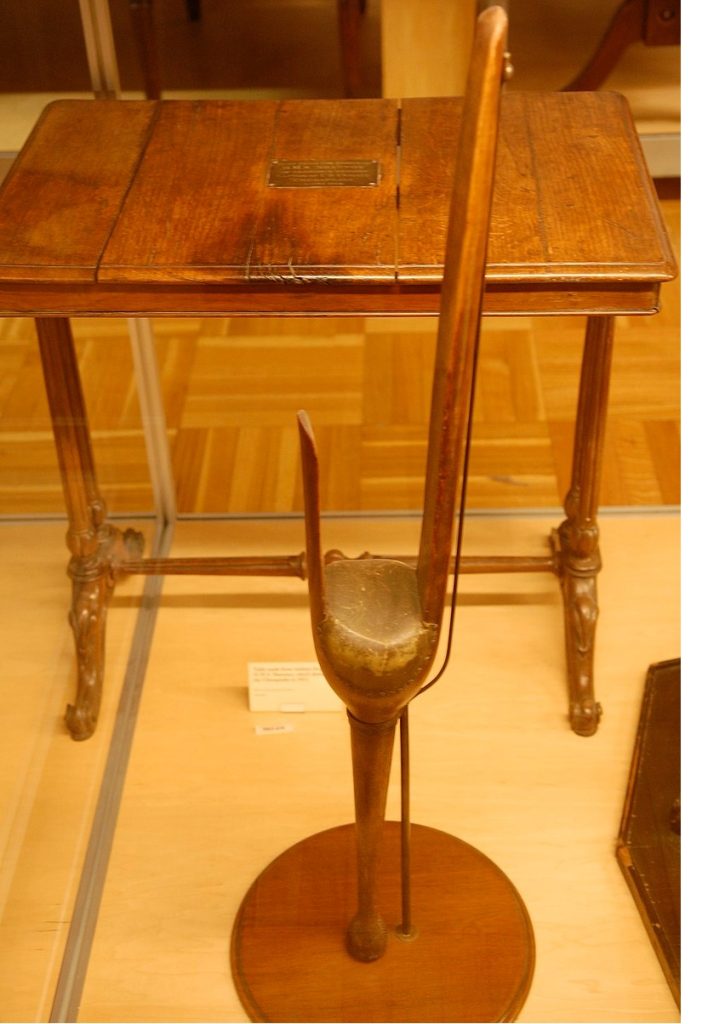
While James Madison is generally recognized as the principal author of the US Constitution, the truth is that this is the ultimate written-by-committee document. Nearly all of the 55 delegates to the Constitutional Convention of 1787 can claim at least partial authorship—none more so than Gouverneur Morris, a Pennsylvania delegate and below-knee amputee. As chair of the convention’s Committee of Style and Arrangement, Morris oversaw the assembly of the final document and the drafting of the Constitution’s published text. He also is credited with personally writing the Preamble, with its immortal introduction: “We the People of the United States, in Order to form a more perfect Union . . .”
That’s not to dismiss Madison’s impact. The Constitution’s central provisions are largely based on his Virginia Plan, and he brokered many of the most difficult compromises during the contentious convention. Madison left his fingerprints all over the Constitution, as did Alexander Hamilton, Thomas Jefferson, and George Washington himself. But the ultimate byline belongs to Morris—or so he declared in a memo to Timothy Pickering, the nation’s first secretary of state. “That Instrument,” he said, referring to the Constitution, “was written by the Fingers which wrote this letter.” The scholar who edited Morris’s papers heartily seconds the notion.
Whether or not you believe Morris deserves credit as author of the whole Constitution, the Preamble alone distinguishes him as a writer of high achievement. Two other items from the Constitutional Convention reflect well on his statesmanship: Morris delivered more orations (173) during the proceedings than any other speaker, and he was one of the most outspoken opponents of the infamous three-fifths compromise, under which each Southern slaves was counted as three-fifths of a person for census purposes. During the convention, Morris called slavery “a nefarious institution” and “the curse of heaven on the states in which it prevailed.”

Courtesy NY Historical Society.
Born in New York in 1752, Morris was a delegate to the 1775 Continental Congress, a co-framer of New York state’s original constitution (1777), and the youngest signer of the Articles of Confederation (1778). He lost his leg two years later, in 1780, after his left ankle got caught in the spokes of a moving carriage. An urban legend holds that the accident occurred while Morris was fleeing the scene of an adulterous tryst, chased by an angry husband. The only true part of that story is that Morris was, by broad consensus, a prolific ladies’ man—both before and after his limb loss. In addition to maintaining a robust love life after the amputation, Morris stayed active as a horseman, boatsman, and traveler. He walked nine miles every day on his wooden leg, according to one biographer.
Morris sailed for France shortly after the Constitution was ratified and spent nearly a decade there as the US finance minister. The bloodiest days of the Reign of Terror unfolded while he was there, and it’s said that once found himself in the clutches of an angry mob that mistook him for a French aristocrat. According to the story, the rabble were looking for a lamppost to hang Morris from when he unfastened his wooden leg, held it aloft, and explained that he cherished liberty so much that he’d sacrificed a limb for the cause. The horde backed off, and Morris made his escape.
Later in life, Morris served a couple of years in the US Senate, then retired to his native New York and made two profound contributions to the future of that city: He led the commissions that drew up Manhattan’s rectangular street grid and mapped the Erie Canal. Historians recognize both those feats of civic planning as turning points in New York’s history, vaulting the city ahead of Philadelphia, Boston, Baltimore, and arguably Charleston in the competition for commercial and financial leadership in the new republic.
Another famous New Yorker, Theodore Roosevelt, wrote a laudatory biography of Morris in 1888. “There has never been an American statesman of keener intellect or more brilliant genius,” the future president wrote. “Had he possessed but a little more steadiness and self-control he would have stood among the two or three very foremost.”
Further reading about the amputee Founding Father:
Humanities, “The Confessions of Gouverneur Morris”
Penn Today: “Gouverneur Morris: Founding Father, Disabled American”
National Archives, “Gouverneur Morris of Pennsylvania”
American Masters, “Gouverneur Morris: Playboy and Penman of the Constitution”
History.com: “The Oddest Founding Father”



